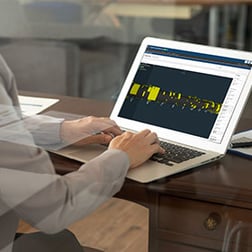The total cost of ownership for integrity software goes far beyond its purchase price, encompassing all the financial obligations associated with the software. This includes usage costs, which are the expenses to get the software functional and support it over its life.
When estimating the total cost of ownership, most usage costs are apparent. However, one aspect of usage is often overlooked—opportunity costs.
Accounting for opportunity costs
To establish the cost of opportunity, subtract the value of the choice made from the most worthwhile alternative. The remaining value is the opportunity cost.
For example, look at on-premise software development, which takes many months (and sometimes years) to reach a useable functionality. Now, what if your company opts for a SaaS solution instead? In what ways would that choice empower engineers to make integrity decisions that save money?
Getting Data Utilization Sooner From A Purpose-Built SaaS Solution
An integrity team benefits from improved data accessibility and connectivity soon after subscribing to OneBridge’s SaaS solution, Cognitive Integrity Management (CIM). Unlike traditional software, with CIM, data utilization is nearly instant.
Data cleanup takes place as information is loaded into the platform
CIM builds a shared data lake as it ingests datasets. Algorithms harness this information and use machine learning to automatically eliminate redundant records, identify duplicates and append missing information. As a result, CIM cleans old data, adding value immediately.
The platform is ideal for changing conditions as it’s nimble, re-evaluating new data as results are received. Instead of waiting for monthly reports, results come fast, reducing the timeline for up-to-date engineering analysis.
Consider false digs or adjacent repairs, for example. By getting analysis reports sooner, how much could the integrity department save?
Cloud-based solutions make data accessible
On a cloud-based platform there are multiple portals: for Windows, Apple, Android and mobile devices. And there are no time-consuming remote data acquisition protocols to slow down user sign-in. This secure—frictionless—access encourages integrity experts to share their high-value input, no matter their location.
Machine learning constantly improves the industry
The pipeline industry gets safer as more operators adopt CIM. The software learns using anonymous data amassed across the platform, ultimately creating a more accurate understanding of pipeline integrity that furthers the drive to zero failures.
Avoiding The Delays Of On-premise / In-house Software
On-premise software is notorious for long timelines, where utilization of integrity data doesn’t start until well into the implementation stage. In other words, it’s a long run from development to when engineers begin to benefit from a new solution.
If a company does decide to build its own program, every poor call that results from these long timelines adds opportunity cost.
An on-premise solution that pulls data from GIS, PODS, APDM or other sources like spreadsheets, takes significant time (contrasted with CIM, which shrinks timelines using centralized data). With disparate, siloed data sources, the more complex a query, the longer it will take to get to an answer.
Making pipeline failures a thing of the past
Integrity management software should help engineers focus on what’s important—maintaining the pipeline. When integrity teams put traditional, time-consuming practices aside, they get immediate access to important anomaly and feature data.
CIM’s cutting-edge tech provides integrity engineers with a sophisticated tool that delivers vital information the moment it’s needed.
Get in touch with OneBridge to learn more about Cognitive Integrity Management (CIM).


















